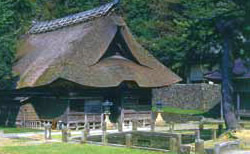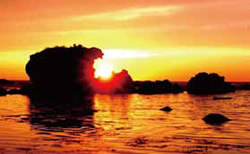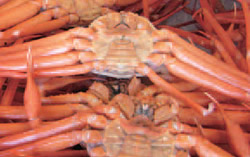- Road Station - Marine Dream Nou

Road & Geosite Conditions
Partially Accessible

- Number
- Area
- 1. Ichiburi Geosite
- 2. Oyashirazu Geosite
- 3. Omi Coast Geosite
- 4. Omigawa Jade Gorge Geosite
- 5. Imai Geosite
- 6. Itoigawa-Shizuoka Tectonic Line and Salt Trail(North) Geosite
- 7. Maikomidaira Geosite
- 8. Hashidate Gold Mine Geosite
- 9. Kotakigawa Jade Gorge Geosite
- 10. Tsugami Shindo Geosite
- 11. Himekawa Gorge Via Oito Line Geosite
- 12. Itoigawa-Shizuoka Tectonic Line and Salt Trail(South) Geosite
- 13. Himekawa Gorge Geosite
- 14. Renge Geosite
- 15. Itoigawa Coast Geosite
- 16. Miyama Park and Museums Geosite
- 17. Tsukimizunoike Geosite
- 18. Umidani Gorge Geosite
- 19. Amakazariyama Geosite
- 20. Yakeyama Geosite
- 21. Benten-iwa Geosite
- 22. Shindosan Geosite
- 23. Gongendake Geosite
- 24. Tsutsuishi Hamatokuai Geosite
- Jade
- 1. Ichiburi Geosite
- 2. Oyashirazu Geosite
- 3. Omi Coast Geosite
- 4. Omigawa Jade Gorge Geosite
- 9. Kotakigawa Jade Gorge Geosite
- 15. Itoigawa Coast Geosite
- 16. Miyama Park and Museums Geosite
- Fossa Magna
- 5. Imai Geosite
- Itoigawa-Shizuoka Tectonic Line and Salt Trail(North) Geosite
- 11. Himekawa Gorge Via Oito Line Geosite
- 12. Itoigawa-Shizuoka Tectonic Line and Salt Trail(South) Geosite
- 13. Himekawa Gorge Geosite
- 17. Tsukimizunoike Geosite
- 21. Benten-iwa Geosite
- 22. Shindosan Geosite
- 24. Tsutsuishi Hamatokuai Geosite
- Mountainous areas
- 7. Maikomidaira Geosite
- 8. Hashidate Gold Mine Geosite
- 10. Tsugami Shindo
- 14. Renge Geosite
- 18. Umidani Gorge Geosite
- 19. Amakazariyama Geosite
- 20. Yakeyama Geosite
- 23. Gongendake Geosite

About 1 million years ago, submarine volcanic activity formed strangely shaped rocks such as Benten-iwa and Tottoko-iwa as well as a fishing reef, making the area an ideal harbor and a popular stop for the 'Kitamae-bune' cargo ships that sailed the Sea of Japan hundreds of years ago during the Edo period.
In nearby Hakusan Shrine (a nationally designated cultural property), you can view 'Hagase-bune,' wooden votive picture tablets of boats (nationally designated folk culture properties), and the shrine's forest, a nationally designated natural monument. The forest is home to a mix of both warm- and cold-climate flora, making it a perfect home for the beautiful Himeharu Cicada. This rare and beautiful cicada species is also a nationally designated natural monument. In spring this shrine holds a beautiful and ancient court dance that has been nationally designated as a folk cultural property. This festival always draws a large crowd of visitors enjoying both the dance and the shrine's cherry blossoms. Few shrines of this size can boast so many nationally designated treasures.
A cycling and walking path has been built on the former Hokuriku railway line, showcasing old train tunnels built from brick toward the end of the Meiji period. In 1963, the Kodomari Landslide struck one of the steam locomotives on this old rail line, pushing it out toward the sea. As a result, the current Hokuriku line was built inside the mountains so such a disaster would not happen again.
 Benten-iwa
Benten-iwa
Benten-iwa, located just less than 100m from the coast of Itoigawa's Nou Region, is a large mass of volcanic rock which was formed by submarine volcanic activity. It has long been worshipped as an avatar of the sea goddess Ichikishima-hime-no-mikoto and atop it sits a shrine dedicated to her. In the modern era it continues to protect sailors with a lighthouse mounted to guide ships to the nearby fishing port.

 Hakusan Shrine
Hakusan Shrine

Nestled against the forested slopes of Mt. Oyama, Hakusan Shrine is home to number of nationally designated treasures. Its main hall, spring festival, unique boat-themed votive tablets, and Buddhist statues are all nationally designated cultural properties. In addition, its forest and the himeharu cicada which live in it are nationally designated natural treasures.
While the shrine has operated for much longer, it's asymmetrically built main hall was constructed in 1515 and features many peculiarities of shrine construction during that era. Clear, fresh water springs from the mountain behind the shrine.
 Tottoko-iwa
Tottoko-iwa
In the Itoigawa Dialect of Japanese, the word "tottoko" means "chicken." Tottoko-iwa was so named because the rock looks like a chicken or chick.
The view of the sun setting behind Tottoko-iwa is a popular subject of photographs.

 Site of the Kodomari Landslide
Site of the Kodomari Landslide

In 1963, the western slope of Kodomari (just above Nou Fishing Port) collapsed catastrophically. The resulting debris struck a steam-powered passenger train that was passing through at the time. The train and it's passengers were pushed over 170m toward the sea.
While there were no serious injuries among the passengers, the landslide did serious damage to houses and shops in the area. It also became the event which spurred the construction of the current Hokuriku Line, which now runs mostly through tunnels in order to avoid such accidents.
The former Hokuriku Line is now a pedestrian and cycling route.
Himeharu Cicada

The Himeharu Cicada is indigenous only to Japan, found throughout the Western half of Japan. The forests of Mt. Oyama, part of Hakusan Shrine, are home to the northernmost colony of these insects. Prized for its beautiful song and occasionally brilliant coloring, the Himeharu Cicada is protected as a National Natural Treasure.
Road Station "Marine Dream Nou"

Selected as one of the best places to view the sunset in Japan, Marine Dream Nou is a roadside tourism facility which features a park and observation platform, seafood market featuring crab, maritime museums, restaurants, and other facilities making it a popular stop for people traveling along Highway 8.
Red Queen Crab

Red queen crab (also called red snow crab) is named for its bright red coloration. It features a relatively small body and very long, meaty legs. It is caught in great quantities here because of a large undersea canyon formed by the Fossa Magna, which makes a perfect habitat for crab.
Try some red queen and other crab and seafood delicacies at Marine Dream Nou or one of the many seafood restaurants in the Nou region.
Route to Benten-iwa Geosite
Destination:


